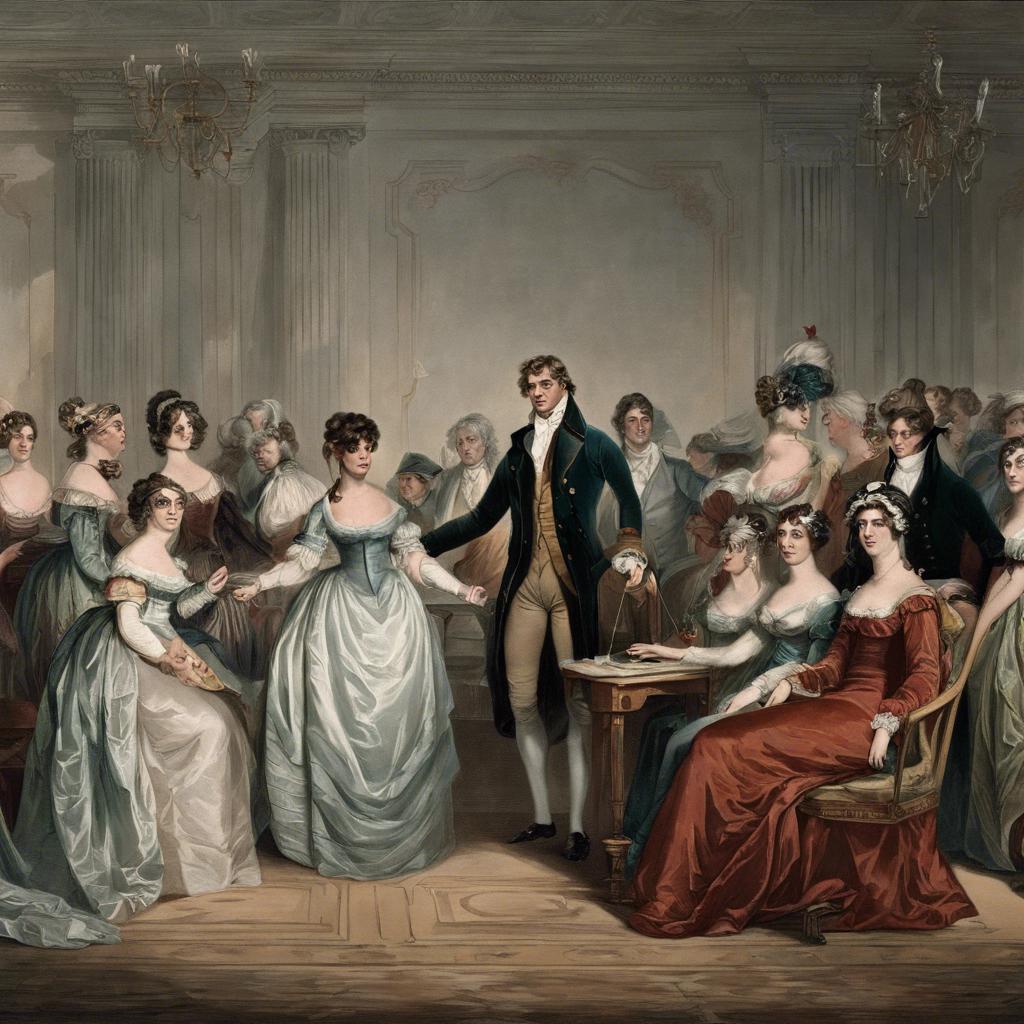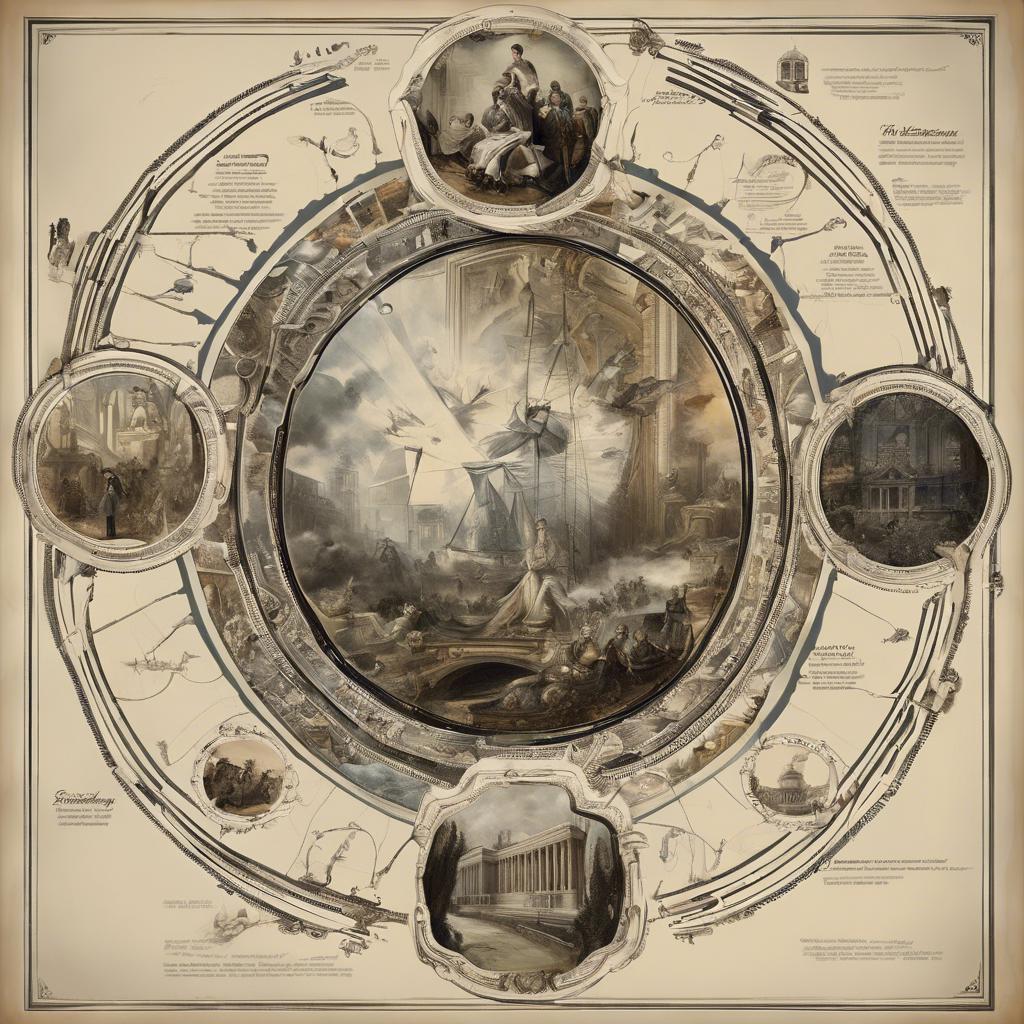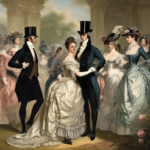In the early nineteenth century, a period of elegance, refinement, and political intrigue unfolded in Britain known as the Regency era. Ranging from 1811 to 1820, this captivating chapter in history was not only marked by the rule of the flamboyant Prince Regent, later King George IV, but also by societal shifts, cultural advancements, and unprecedented industrialization. Delve into the intricacies of this historically significant era as we explore the political landscape, social customs, and notable figures that shaped the Regency period.
Step Into the World of Cheryl Bolen
Dive into the enchanting stories of love, intrigue, and elegance set in the Regency Era. Cheryl Bolen's novels offer timeless romance and captivating tales that will leave you wanting more.
Explore Cheryl Bolen's Books Now
Overview of the Regency Era: Key Events and Influential Figures
The Regency Era was a significant period in British history spanning from 1811 to 1820. It was characterized by the rule of the Prince Regent, who later became King George IV. During this time, the country underwent major political and social changes, shaping the future of the British Empire.
Key events of the Regency Era included the Napoleonic Wars, which had a profound impact on Europe and beyond. The Congress of Vienna in 1815 marked the end of the wars and the beginning of a new era of diplomacy and international relations. Domestically, the Industrial Revolution was in full swing, transforming the economy and society.
Several influential figures emerged during the Regency Era, such as Jane Austen, whose novels captured the spirit of the time with wit and insight. Other notable personalities included Lord Byron, a leading poet of the Romantic movement, and William Wilberforce, a prominent politician and anti-slavery campaigner.
Social Structures and Customs in Regency Society: Unveiling the Class Divide
In Regency society, social structures were highly stratified, with individuals being divided into distinct classes based on factors such as wealth, birth, and occupation. At the top of the hierarchy were the nobility, including dukes, earls, and viscounts, who enjoyed significant privileges and power. Beneath them were the gentry, comprised of landed gentlemen and wealthy merchants, followed by the lower classes, such as tradespeople and servants. This rigid class system dictated every aspect of life, from where people lived to whom they could socialize with.
Customs in Regency society reflected and reinforced the class divide, with strict rules governing behavior and interactions between different classes. For example, the concept of “propriety” was crucial, dictating how individuals should speak, dress, and conduct themselves in public. Etiquette manuals outlined the correct way to address others based on their social status, ensuring that hierarchy was always maintained. Additionally, social events such as balls and dinners served as opportunities for individuals to display their wealth and status, further emphasizing the disparities between classes.
Despite the class divisions in Regency society, there were instances where the lines blurred, particularly through marriage. Inter-class marriages were not uncommon, as individuals sought to improve their social standing or financial situation. However, these unions were often met with opposition from families and society at large, highlighting the deep-rooted prejudices and expectations surrounding the class system. Ultimately, social structures and customs in Regency society played a crucial role in shaping individuals’ lives and interactions, showcasing the complexities and challenges of navigating a society defined by class.
Fashion and Architecture in the Regency Era: A Blend of Elegance and Innovation
In the Regency Era, fashion and architecture came together to create a unique blend of elegance and innovation. This period, spanning from 1811 to 1820 in Britain, was characterized by a resurgence of classical design elements mixed with a touch of romanticism.
Regency fashion was defined by high waistlines, flowing fabrics, and delicate embellishments. Women’s dresses featured empire silhouettes, soft pastel colors, and intricate embroidery. Men’s fashion saw the rise of tailored suits with fitted jackets and high collars, reflecting the refined and polished aesthetic of the era.
Architecture in the Regency Era was marked by the popularity of Greek and Roman-inspired designs. Buildings featured neoclassical columns, geometric shapes, and grand facades. The use of large windows and open floor plans allowed for natural light to flood the interiors, creating spaces that were both functional and aesthetically pleasing.
Literature and Arts in Regency England: Exploring the Cultural Renaissance
The Regency era in England, spanning from 1811 to 1820, was a period marked by a cultural renaissance in literature and arts. During this time, significant developments in poetry, prose, painting, and architecture shaped the creative landscape of the country. Let’s delve into the rich history of literature and arts in Regency England and explore the artistic achievements of this fascinating period.
One of the most renowned figures in Regency literature was Jane Austen, whose novels such as “Pride and Prejudice” and “Sense and Sensibility” captured the essence of society during this time. Austen’s sharp wit and keen observations of human nature have cemented her as a literary icon, influencing generations of writers to come. The Regency era also saw the rise of Romantic poets like Lord Byron and John Keats, whose works focused on nature, emotion, and individuality.
In the realm of arts, Regency England witnessed a flourishing of neoclassical architecture, characterized by grandeur and symmetry. The iconic structures of this period, such as the Royal Pavilion in Brighton and Buckingham Palace in London, reflect the opulence and elegance of Regency design. Additionally, the era saw a rise in portrait painting, with artists like Thomas Lawrence and George Romney capturing the likeness and essence of the aristocracy in their masterful works.
In Summary
the Regency Era stands as a pivotal period in British history, marked by political intrigue, cultural refinement, and societal upheaval. From the charismatic leadership of the Prince Regent to the enduring legacy of literary giants like Jane Austen, this era continues to capture the imagination of scholars and history enthusiasts alike. As we reflect on the triumphs and challenges of this transformative period, may we continue to draw inspiration from the resilience and innovation of those who lived through the Regency Era. In preserving and honoring their legacy, we ensure that the lessons of the past continue to inform and guide us in the present and future.


